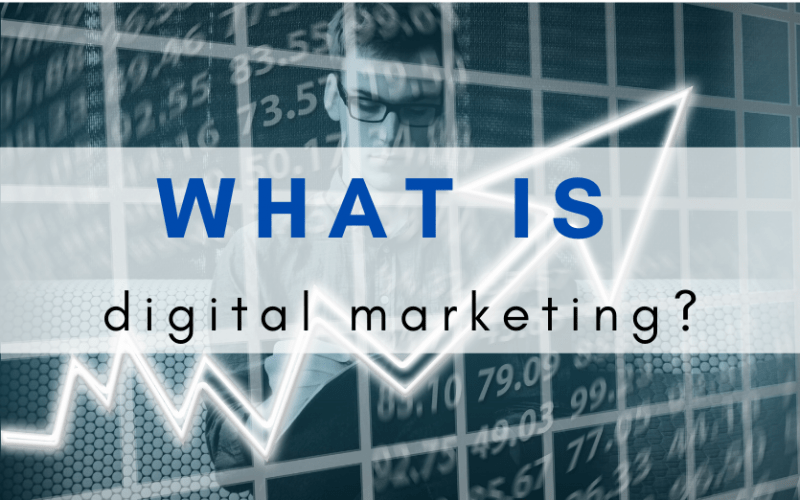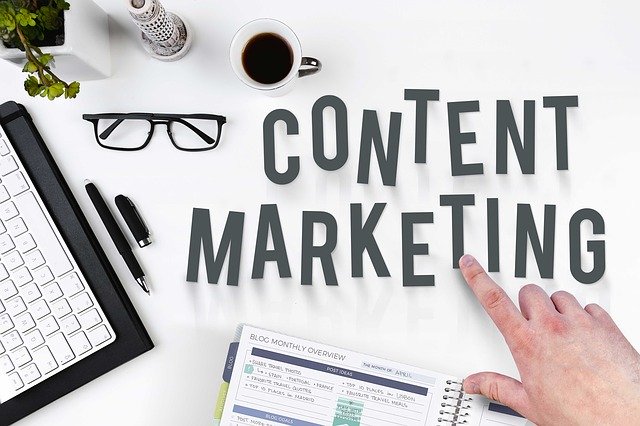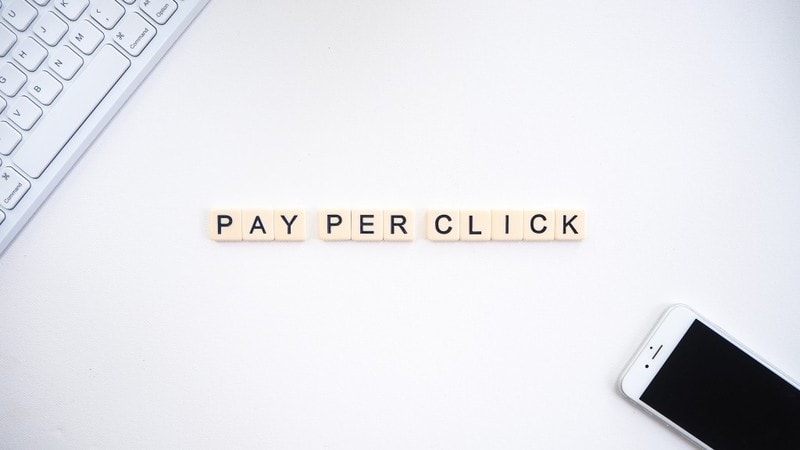What is digital marketing? Everything you need to know

Digital marketing – is a phrase that describes actions and efforts that employ various electronic devices and internet channels such as emails, search engines, social media platforms in order to connect a business entity to a customer.
As you can see, it’s a term that envelopes quite a lot of things related to advertising and promotion.
New technologies have changed the ways we let people know about our products or services and connect with the right audience.
To better understand what digital marketing is all about, I’ve collected all the things you need to know about digital in one place including the definition, its main types, the role advertisements etc.
So, without further adieu, let’s dive right in.
The role of digital marketing. How is it different from more traditional means?

While traditional marketing like printed ads, communications through phone and physical promotion still exists, it plays a much smaller role than its digital alternative. The latter can occur through the internet and electronically, meaning there’s far more possibilities for businesses to advertise themselves.
Social media, emails, videos or website-based marketing efforts are more vital than ever before for any business. Practically any entity these days has a designated website to itself or at least some kind of social media page on Facebook, Twitter or Instagram.
The vitality of digital marketing to businesses is further enhanced by consumer expectations. Admit it, before you buy something, you expect to find some information about the business online. This expectation of information is pretty standard, which is why entities have to maintain some kind of footprint on the internet through digital marketing, in order to remain competitive.
Since there are so many options and strategies to promote your brand in the online world, there’s quite a lot of liberty to explore and the best working balance for your business, even on a very limited budget.
You can create simple ads on Google and Facebook and monitor the ROI of your campaigns or employ a slower, but more effective methodology in the long run such as SEO. The opportunities really are endless.
So, the role of digital marketing is far different from traditional marketing. Businesses can now promote their products, services or the brand itself through much more efficient means than before.
This includes cheaper advertising costs, faster customer reach and more flexibility for developing their promotion strategy.
To further illustrate this, I’ve listed the main types of digital marketing below.
Main types of digital marketing you should know about
| Type of Digital Marketing | Some examples |
| Search Engine Optimization (SEO) | On-page and Off-page, Technical SEO. |
| Content Marketing | Blog posts, Infographs, E-books. |
| Social Media Marketing | Facebook, Twitter, Youtube, Linkedin ads. |
| Pay Per Click (PPC) | Google Ads, Bing Ads, Facebook Ads |
| Affiliate Marketing | Link exchange, Hosting Youtube Ads , Aritcles with links. |
| Automated Marketing | Autosenders, autoresponders, scheduled posts. |
| Online PR | Responding to comments, reviews, social media. |
| Sponsored Content | Post, video, promotion exchange. |
I’ll describe each type with some examples below.
Search Engine Optimization (SEO)

The type of websites that benefit the most from SEO are business websites, blogs and e-shops.
While SEO envelopes a number of practices to improve a website, these are the main ones in my opinion:
On Page SEO
These SEO practices mainly focus on what an average visitor can see on the page that they are looking at. This includes an organized design, good visuals, but most important it involves the content itself.
Quality articles and blog posts are the best and most rewarding tools to use in order to rank higher. They have to be thorough and answer the questions the users are looking answers to.
Off Page SEO
Naturally, these strategies focus on everything that affects rankings off the page. In this case, the most important things are backlinks. Quality links that are from an authoritative website can also help boost your rankings quite dramatically.
You can exchange articles, write a guest post or collaborate with other owners and gain a link leading back to your website. This generates “external attention” for your website and thus, your rankings are boosted.
Technical SEO
Finally, there’s the technical aspects of your site which affect your ranks. This includes stuff like the way your website is coded, whether you have compressed images to save loading time, optimized CSS and structured data.
Not only do technical jobs like this help your overall ranks, they boost your site’s speed and loading time significantly as well.
Content Marketing

Another type of digital marketing, considered to be one of the most effective these days is called content marketing. The concept refers to creating content of value which would help promote the brand, generate potential leads, traffic and clients.
Some of the most common content types used in marketing are these:
Blog posts
Running your company blog is not as difficult as it might seem at first and trust me, the results will be worth it. Not only do you create more opportunities for organic traffic through keywords, you can also demonstrate your expertise on a subject.
Let’s say you’re an interior designer. Writing a few posts a week about house decorations are surely to gain you some attention from searchers. People decorate their houses all the time and reading tips from a professional, will surely make your business more attractive.
Long-form content
Sometimes blog posts may not be enough, so that’s where ebooks, whitepapers and other forms of larger content come into play. The most common way of promoting a business here is to offer visitors a download in exchange for their information.
You’ve probably seen things like “enter your email to receive a free book” and so on. This is how long-form content is used to generate leads.
Infographic documents
Let’s be honest, visual content is usually more effective than a read. Especially when it comes to stuff where visualization is a must like statistics and so on.
Infographics really help people learn and notice the efforts of your brand.
Social Media Marketing

As the title suggest, this refers to promotional efforts of your brand through social media. The aim is to generate awareness, customer interest and of course buyers for the business.
The most popular social media marketing channels are these.
This practice promotes your brand and your content on social media channels to increase brand awareness, drive traffic, and generate leads for your business.
The channels you can use in social media marketing include:
- Snapchat
- Pinterest.
There are a lot of aspects that make up social media marketing. For the sake of this article, I’ll try to keep it short. Basically, each of these websites allow you to publish various content, run ads and get analytics on how your efforts are working out.
Many still underestimate the impact a simple social page can have both for promoting yourself and doing PR.
Pay Per Click (PPC) Marketing

PPC refers to paid, clickable advertisements aimed at promoting your brand, services and products. One of the most common ways to do PPC is through Google Ads. You create a few ads and set a pay rate to Google for every click a user does on your advertisement.
In exchange, Google puts your ads on top of the search results (yes, even higher than the top organic spot) as long as you pay them a certain amount.
It should be noted that costs for one clicks are very varied, depending on your niche. Sometimes it’s fair to pay 50 cents for one, but in the finance and insurance industries, costs for the top spot can reach a whopping 60 dollars for a single click.
Anyway, Google Ads isn’t the only PPC channel out there. Here are some other notable ones:
Facebook Ads
Similar to Google, Facebook allows you to run customizable ads for your business on the platform. This includes videos, images, slideshows and others which will then be displayed on the newsfeed of your target audience. Pretty effective choice, if you have a specific type of people you want to reach.
Twitter campaigns
Twitter allows you to run ad campaigns as well. You set a goal at first, being more followers on your Twitter page, increased engagement, app downloads or website traffic. Your campaigns will appear on the feed of your targeted audience. The ads themselves appear as either profile badges or tweets.
Linkedin sponsored messages
We all know that Linkedin is more used as a platform for business people, frequently for things like recruitment and so on. The platform allows you to send direct sponsored messages to certain users based on your defined criteria. Really useful to promote yourself or contact potential candidates for a job position.
Affiliate and Native marketing

This concept refers to getting a commission or receiving other benefits for promoting someone else’s product or services on your platform or website.
Obviously, the main advantage here is mutual benefit. You get a reward and the other party gets a free promotion, or it can be vice versa.
Most common ways it’s done:
- Sharing the affiliate links on social media accounts
- Hosting ads on Youtube via Youtube Partner Program
- Article exchange with backlinks.
On the other hand, there’s native marketing:
This is much more simple and primarily involves content-based promotions placed alongside free content on a site. A sponsored post/article found on a news website could be a good example.
The definition of native marketing is pretty as some count a paid social media post an example of native marketing as well.
Automated marketing

Another form of digital marketing refers to automated promotional efforts. Just a little while ago, such apps were quite a new thing, however such software has spread very quickly as it offers a lot of benefits.
Instead of doing very repetitive tasks yourself, you can automate certain advertisement-related tasks.
Some examples where automation shines are these:
Email automation
Emails were used by businesses for communication pretty much since the day emailing as such was invented. Content promotions, newsletters, notices on events and discounts, you name it.
Other email types like subscription, welcome and follow-up emails, meanwhile, allow you to communicate with your new clients.
Automation apps allow you to simplify these mundane tasks and send any emails you want on schedule and for specific audiences based on your defined criteria.
Social media/Blog post scheduling
As it’s obvious by now, you need to post content and post it frequently on your main platforms if you were to expect to maintain interest in your business. This includes social media posts as well posts on your website blog.
Automated tools allow you to schedule everything in the future across multiple channels, so you won’t have to worry about forgetting to post something related to your business.
Tracking and reports
Some marketing campaigns are more complex than others and take a number of factors into consideration. If you want to be consistently informed on how well your promotional efforts are doing, there’s nothing better than an automated tool to do so for you.
This is especially relevant if you are running stuff on multiple platforms as you can get a report on every campaign in your email.
Online PR

With Online PR (Public Relations) you use certain digital channels to communicate with your audience and customer on behalf of a business. It’s pretty much the same as traditional PR, however, in the online space.
Some of Online PR examples include:
Talking with journalists online
This could be talking with journalists on Facebook or Twitter, responding to their questions, maintaining a relationship that’s beneficial to the company.
Responding to company reviews
There are a number of ways you might get your company reviewed or mentioned and sometimes the reviews might not be so good.
It’s alright, companies mess up. Instead of ignoring, respond to the feedback on your company. This can play a huge role in making your company seem more human.
Replying to people’s comments
Finally, there’s arguably the most important part of public relations online – talking with your audience. Responding to comments people made on your blog post, Facebook or Twitter pages shows that you indeed care what they have to say.
Sponsored Content

Lastly, there’s sponsored content, the marketing type that I’ve already touched on briefly. Here you pay a company or other entity to create some form of content to promote you.
It can be an article, a Youtube video made on you and so on. Businesses often recruit the help of influencers that have an active and engaged following on social media.
If you’re familiar with the whole ad chaos going on Youtube right now, many Youtubers are very willing to promote businesses in order to maintain an extra source of income. So, you can try your luck even if you are a less known entity looking to promote your services or products.
Do I need a big budget for digital marketing?
It’s quite difficult to say, it all depends on what strategy/platform you use what you are trying to achieve in the end.
Focusing on SEO, valuable content creation and social media promotions for your website, is a much longer process to advertise yourself, however, definitely cheaper and worth it in the long run.
Good content is consumed with great interest by users and if they see that you put honest work in, they will be more interested in you as a business as well.
On the other hand, there’s paid promotions. Buying ads from Google, Facebook or Twitter, might be so cheap for a niche where there isn’t much competition, however if you’re someone like an insurance agency, attorney’s office or a mortgage company, you’ll pay literal hundreds of thousands a month as it’s that competitive.
So, your budget mainly depends on the niche, competition and the type of channels you choose to promote your business.
Should I care about mobiles and marketing for them?
Yes, yes you should. Many still underestimate the importance of mobile usage in general. Statisticians from the US estimate that people consume media on their smartphones or tablets almost 70 percent of the time, while desktop computer usage continues to plummet.
This means that businesses will follow, like they always do. Your website has to be optimized for mobile and tablet usage, perhaps even have a dedicated app if you are strictly focused on selling products on the internet.
I have no doubt that mobiles will play an even bigger role in the future, which is why I want to emphasize this part so much.
Make your site ready, be prepared to reach and engage people on mobile phones and I’m sure you’ll be good.
All in all,
I’ve discussed the practices of digital marketing as a whole. Indeed, it changed the way we understand and engage in promotion quite dramatically, and made such efforts much easier to maintain, even as a completely new business.
In order to succeed, I think the most important things are to know your audience, test out different channels and find the balance that works for you.








